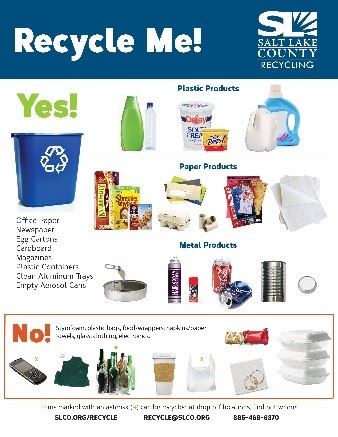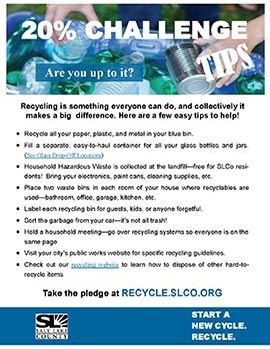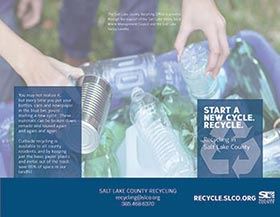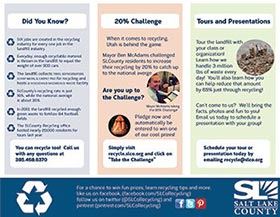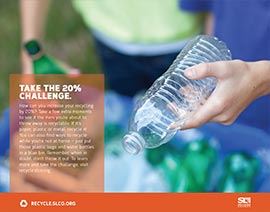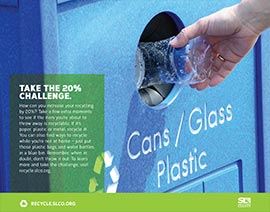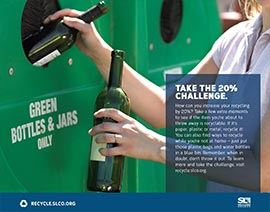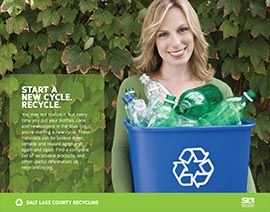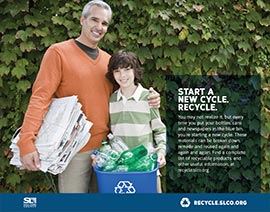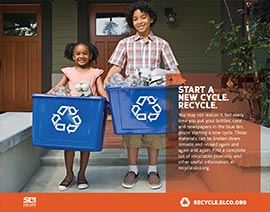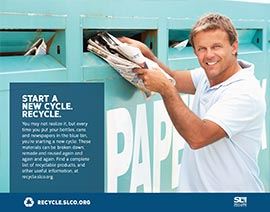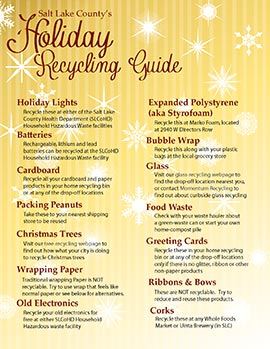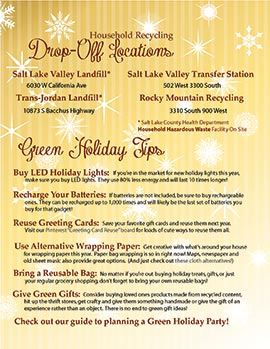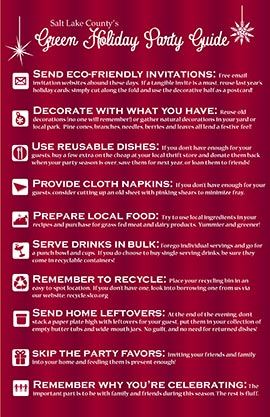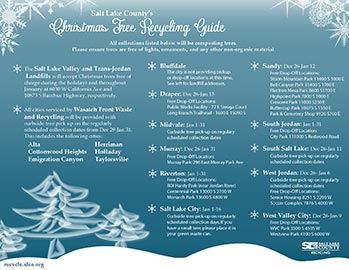Resources
The documents available on this page are in PDF file format
Click on your community below to:
- Contact your recycling hauler (for bin replacement, additional acceptable items for
recycling, and other service questions)
- Learn about nearby recycling drop-off locations for household recyclables and glass
- Learn where the nearest full-service household hazardous waste (HHW) facility is
For more details on recycling drop-off locations, visit our Recycling Drop-Off Map!
For more information on hard to recycle materials, such as mattresses, tires, shredded paper, plastic bags and film, and individual hazardous waste items, check out our Hard To Recycle Materials webpage!
Here is the Household Hazardous Waste collection events.
Did you know that Compost can…
- Suppress plant diseases & pests.
- Reduce or eliminate the need for chemical fertilizers.
- Promote higher yields of agricultural crops.
- Facilitate reforestation, wetlands restoration, and habitat revitalization efforts by amending contaminated, compacted, and marginal soils.
- Cost-effectively remediate soils contaminated by hazardous waste.
- Remove solids, oil, grease, and heavy metals from storm water runoff.
- Capture and destroy 99.6 percent of industrial volatile organic chemicals (VOCs) in contaminated air.
- Provide cost savings of at least 50 percent over conventional soil, water, & air pollution remediation technologies, where applicable. - Environmental Protection Agency (EPA)
Why Not Put Yard Wastes in Landfills?
Since these materials are relatively clean and bio- degradable, disposal in landfills may be unnecessary and wastes space. In addition, as yard wastes decompose in landfills, they generate methane gas and acidic leachate. Methane is a colorless, explosive greenhouse gas that is released as bacteria decompose organic materials in landfills. If methane is not controlled at a landfill, it can seep underground and into nearby buildings, where it has the potential to ex- plode. Yard wastes also contribute acidity that can make other waste constituents more mobile and therefore more toxic. - EPA
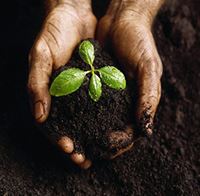
Home Composting
...A practical method of turning leaves, grass, weeds, and other organic materials into a valuable soil amendment
The Composting Process
- Composting is a natural process that decom- poses yard waste into a rich humus. This humus returns usable “plant friendly” organic matter & nutrients to the soil.
- Compost improves the water holding capacity, drainage, and workability of existing soils.
- Composting involves micro-organisms, earthworms, small insects, and small soil organisms which eat (decompose) organic yard waste.
- The composting process requires carbon, nitrogen, water and oxygen to effectively work. (Organisms which break down raw materials need carbon for energy and nitrogen for protein and other nutrients.)
Organic wastes high in carbon:
- Paper
- Sawdust
- Woodchips
- Straw and leaves (Dried brown vegetation)
Organic wastes high in nitrogen:
- Vegetable scraps
- Peelings
- Grass clippings
- Farm manure
- Green fresh vegetation
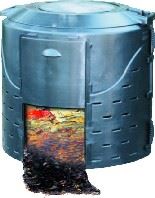
An organic carbon to nitrogen ratio best for composting is (25-30:1). Visually, this will look like you have twice as much brown material as green material.
What can be composted
- Yard Waste
- Kitchen Waste
- Leaves
- Fruit
- Corn Stalks
- Tea Bags
- Straw & Hay
- Vegetable Peels
- Grass Clippings
- Coffee Grounds/Filters
- Wood Ash
- Weeds
- Cow & Horse Manure
What can’t be composted?
- Coal Ash
- Pet Manure
- Diseased Plants
- Treated Lumber
- Large Branches
- Large Pieces of Wood
- Mature Weeds (seeding)
- Diseased & Infested Plants
- Pesticide Treated Leaves and Grass
- Weeds Spread by Runners (i.e. Morning Glory, Quack Grass, Buttercup)
Also, Do Not Compost any of the following kitchen wastes: meats, bones, dairy products, salad dressing, cooking oil, peanut butter, grease, and charcoal ashes. These items attract rodents and flies.
Note: If you have too much yard waste to effectively compost, take the excess to the Salt Lake Valley Landfill Compost Facility!
How to Start Composting
- First choose a composting bin or pile at least 3 ft. by 3 ft. to maintain proper composting temperature. (anything bigger than 5 ft. by 5 ft. does not allow the proper flow of oxygen). (B.) Place (chopped or shredded) kitchen or yard wastes into the composting bin/pile.
- Layer & mix the organic material with soil. Soil contains the micro-organisms & soil creatures “bugs” that do the work of turning organic matter into compost. (An inch to 1/2 inch layer of soil over the top of the compost will also keep the surface from drying out.)
- Adjust the amount of water in your compost pile. Add dry straw , sawdust, or wood chips to a soggy pile...Add water to a pile that is too dry. That materials should be damp to the touch. (like a damp sponge.)
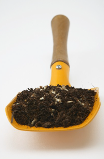 Allow the compost bin or pile to bake at 90º to 140ºF. (this temperature should be reached in five to seven days.)
Allow the compost bin or pile to bake at 90º to 140ºF. (this temperature should be reached in five to seven days.)- Turn the compost to give it oxygen as it bakes to speed up the composting process.
- If a bin or pile is turned every week with the proper moisture & mix of materials, the compost should be ready to use in 2-3 months. If the material in your bin or pile is not turned, the compost should be ready in 10 or more months.
- (H.) Compost is ready to use when it is dark & crumbly with a clean earthy smell. The original organic matter should not be identifiable.
Common Composting Problems
Strong Odors
Cause: Not enough air
Solution:Turn the compost weekly
TooWet and Soggy
Cause: Too much water
Solution: Add dry grass or straw & turn the compost weekly
Wet and not Composting:
Cause: Not enough Nitrogen
Solution: Add grass clippings or Nitrogen
Dry and Not Composting
Cause: Not enough water
Solution: Add grass clippings or Nitrogen based fertilizer & turn compost weekly
Ammonia Smell
Cause: Too much Nitrogen
Solution: Add dry leaves, straw or sawdust & turn the compost weekly
Temperature of pile too high
Cause: Poor ventilation
Solution: Turn the pile
Temperature of pile too low
Cause: Pile too small
Solution: Make pile bigger or insulate the sides
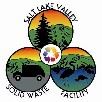
Salt Lake County Recycling Office: 385-468-6370
Kindergarten
Coloring Books
- Battery Coloring Sheet
- Planet Protectors Create Less Waste in the First Place
- E- Waste
- Garbage Truck
- Green Waste
- Heavy Equipment
- Paper and Cardboard
- Recycle Rex
First Grade
Second Grade
Third Grade
Coloring Books
- Battery Coloring Sheet
- Planet Protectors Create Less Waste in the First Place
- E- Waste
- Garbage Truck
- Green Waste
- Heavy Equipment
- Paper and Cardboard
- Recycle Rex
Fourth Grade
- Find a Word - Recycle Right
- Games 4-6 - Crosswords
- How to Make Paper Beads
- Make Paper
- Natural Resources Matching Game
- Recycle Super Hero Directions
- Recycled Arts and Crafts Guide
- Recycling Facts, Games & Crafts
- Redworm Composting
- Soil Nutrients & Plant Health
Coloring Books
- Battery Coloring Sheet
- Planet Protectors Create Less Waste in the First Place
- E- Waste
- Garbage Truck
- Green Waste
- Heavy Equipment
- Paper and Cardboard
- Recycle Rex
Fifth Grade
- Find a Word - Recycle Right
- Games 4-6 - Crosswords
- Making Natural Dyes and Paper
- Natural Resources Matching Game
- Recycle Super Hero Directions
- Recycled Arts and Crafts Guide
- Recycling Facts, Games & Crafts
- Soil Nutrients & Plant Health
Coloring Books
- Battery Coloring Sheet
- Planet Protectors Create Less Waste in the First Place
- E- Waste
- Garbage Truck
- Green Waste
- Heavy Equipment
- Paper and Cardboard
- Recycle Rex
Sixth Grade
- Find a Word - Recycle Right
- Games 4-6 - Crosswords
- Making Natural Dyes and Paper
- Natural Resources Matching Game
- Recycle Super Hero Directions
- Recycled Arts and Crafts Guide
- Recycling Facts, Games & Crafts
Coloring Books
- Battery Coloring Sheet
- Planet Protectors Create Less Waste in the First Place
- E- Waste
- Garbage Truck
- Green Waste
- Heavy Equipment
- Paper and Cardboard
- Recycle Rex
Seventh Grade
Eighth Grade
Ninth Grade
Six Ways to Save Money and Resources
83% of consumers think companies should accomplish business goals while improving society and the environment.
-
Turn off lights and electronics
US organizations waste $2.8 Billion a year in energy costs by leaving computers on overnight. Not to mention printers, fax machines, copiers and lights.
-
Bale and sell cardboard
Baled cardboard sells at an average of $80/ton. If you accumulate enough, the expense of a baler may pay off in the end.
-
Add a filtration system
Stop the expense of disposable water bottles. Buy a filter and make the one-time purchase of sturdy, company-logo, reusable bottles.
-
Reduce garbage collection
Adding a recycling bin can cut your garbage collection in half. Since waste haulers pay to dispose of garbage, but not recyclables, those savings can be passed on to you.
-
Reduce wasteful purchases
Assess your purchases - is there something that is unnecessary? Cut the excess and save the money!
-
Go paperless
Save nearly $1,000 a year on paper and ink by foregoing the print option.
How Can I recycle In a Multi-Family Setting?
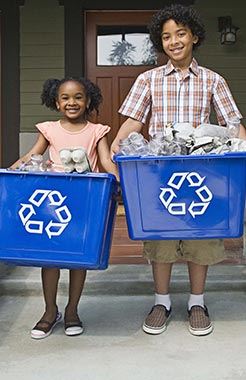
Step 1: Community Support
Speak with your neighbors about the benefits of recycling. The more community support you gain, the higher the priority it becomes for your HOA or landlord.
Step 2: Research
Look into similar complexes in your area that recycle successfully. Make a few phone calls to the managers of those complexes to find outwhich collection agencies they use. Find out if your complex's current waste contractor offers recycling.
Step 3: Address Common Concerns
Anticipate and address concerns your HOA or landlord will have including cost, space and contaminated recycle bins. A combined service may cost less than trash alone, trash bins can be replaced by recycle binsand contamination can be reduced by providing recycling guides to residents.
Step 4: Approval
Speak with your Landlord or HOA about the benefits of recycling. Show them the community support. Discuss their concerns and offer solutions. Provide them the contact information of waste/recycling contractors.
Step 5: Follow Up
Be persistent. You may need to follow up a multiple times but your efforts willpay off!
Waste Collection Companies:
- Ace Recycling and Disposal (801) 363-9995
- Allied Waste Service (888) 502-7458
- Tiger Sanitation (801) 978-2287
- Wasatch Front Recycling & Waste (385) 468-6325
- Waste Management (888) 496-8824
- WSI-Trash Valet & Recycling (801) 573-9267
Remember: Only your Landlord or HOA Board may set up recycling services
What Do I put
In My Blue Bin?
- Plastics
- Aluminum Cans and Trays
- Metals
- Paper
- Cardboard
- Egg Cartons
- Empty AerosolCans
What Doesn't Go In The Blue Bin
- Glass
- Clothing
- Paper Towels
- Food/Wrappers
- Styrofoam
- Electronics
- Hazardous Waste
- Appliances
Many of the items not acceptable in your blue bin may be recycled at specified locations
